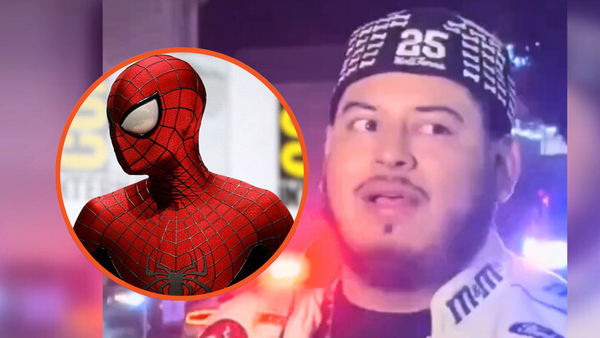
It is a moment in FA Cup folklore that will always have a place in the hearts of Sheffield United supporters but one that those of a Manchester City persuasion do not hold quite so dearly. It was January 2008 and Sven-Göran Eriksson arrived at a blustery Bramall Lane determined to progress to the fifth round but within 12 minutes his City team were reeling from a sense of injustice after trailing to a freakish goal.
Bamboozled by a smattering of balloons in the City penalty area thrown from the away end, the left-back Michael Ball swiped at thin air as he went to clear a cross and presented Luton Shelton with a simple finish. “I’m getting all the trauma back now,” says the former City defender Nedum Onuoha before Saturday’s FA Cup semi-final at Wembley, the teams’ first meeting in the competition since the infamous balloon-gate incident.
Brian Kidd, the former Manchester United forward, was assistant to the then Sheffield United manager Bryan Robson, another former Old Trafford favourite. Lee Martin, on loan from Manchester United, faced up the City centre-back Richard Dunne and sent in a low cross with the outside of his right boot. The ball took a deflection off Dunne then skidded along the edge of the six-yard box, cannoning into a sky-blue balloon before bumbling into a white one. Ball attempted to sidefoot the ball clear with his right foot but its unexpected course threw him off. “It took a decent deflection off a balloon – you couldn’t tell where the ball was going to go,” says the former Sheffield United midfielder Stephen Quinn.
Eriksson and his coaching staff had asked the fourth official to tell the referee, Alan Wiley, to “kill the balloons” but play was allowed to continue and controversy ensued. Eriksson felt it was unfair and unsporting that the referee asked the City goalkeeper, Joe Hart, to get rid of the balloons while play was at the other end. Hart had spent the previous 10 minutes furiously stamping with both feet to burst the balloons but his cleanup operation proved inadequate. “I made my debut against Joe [for Sheffield United against Shrewsbury in 2005] and I have come across him quite a few times over the years,” says Quinn. “He was furious, absolutely livid.”

City complained to the Football Association, claiming the goal should have been disallowed. Eriksson argued the balloons played “a one-two with Michael Ball”. The most similar incident since came the following year, when Darren Bent scored for Sunderland against Liverpool when his shot cannoned in via a beachball. “I think now you would never get away with something like it and I suppose the fact it was blue and white balloons, not red and white, made it all a little funnier,” says the former Sheffield United striker Jon Stead, who freed Martin for the first goal and scored the second in a 2-1 victory. “Those balloons gained a lot of attention, but I do still feel that we deserved to win regardless.”
City struggled to deal with a bobbly pitch and raucous home crowd. “I believe we didn’t protest much because we were playing the game with balloons on the field,” Onuoha says. “If there was an issue the ref would have stopped the game. We were playing as if that was just the way the game was going to be. I felt most sorry for Michael Ball. He was trying to explain the ball hit a balloon. But what do you say to him? He’ll be seen as the villain but, actually, he was the victim. But, realistically, what sympathy is he going to get? I think we made sure to pop all the balloons from that point.”

City players were somewhere between outraged and astounded. “It is one of those blind spots because you could say to the ref, ‘Well, it’s hit a balloon,’ but it happens so rarely that you don’t know how to respond,” Onuoha says. “It was like: ‘What now?’ Do you run to the referee to say: ‘Can you take that goal off please because the ball has hit a balloon?’” It was a sore defeat to swallow. “It is probably iconic for them but one we wanted to forget as quickly as possible.”
In the buildup there was plenty of noise around City for the right reasons. They were seventh in the Premier League, two points off the top four. Thaksin Shinawatra, Thailand’s former prime minister, appointed Eriksson on a three-year deal and sanctioned a flurry of exotic signings, including Elano and Geovanni, both of whom featured. A teenage Daniel Sturridge, who volleyed in his first City goal in the second half, was breaking through. “Sven would have been disappointed because he came in to be successful,” says Onuoha. “We went on a bit of a bad run around that time.”
For Sheffield United, also then of the Championship, it was the perfect tonic after a derby defeat at Hillsborough the previous weekend. “Nowadays I think they would stop the game for a little bit and clear the balloons away,” says the former Sheffield United defender Leigh Bromby. “You could tell something happened with the balloons but it wasn’t until after the game that you fully realised that you got a little bit of luck in the game and that it’s gone for you.”

Rewatching footage of Shelton’s goal, Stead admits it was absurd. “It’s crazy how much it affected the ball’s movement,” he says. “It played havoc with both Luton and Michael Ball. I think it put Luton off as much as the defender but luckily the ball stopped at his feet after it bobbled across.”
Much has changed since the clubs’ last FA Cup meeting. City have won the Cup twice and six Premier League titles. Shelton died in 2021, aged 35. Gary Speed, also in the Sheffield United starting lineup, died 10 years earlier, aged 42. Billy Sharp, a second-half substitute in 2008, will probably captain his boyhood club at Wembley but in an age where AI-powered technology is used to speed up VAR calls, it is almost unimaginable that the scenario that played out at Bramall Lane could repeat itself. “It shouldn’t do, but I would never say it wouldn’t,” Onuoha says.







